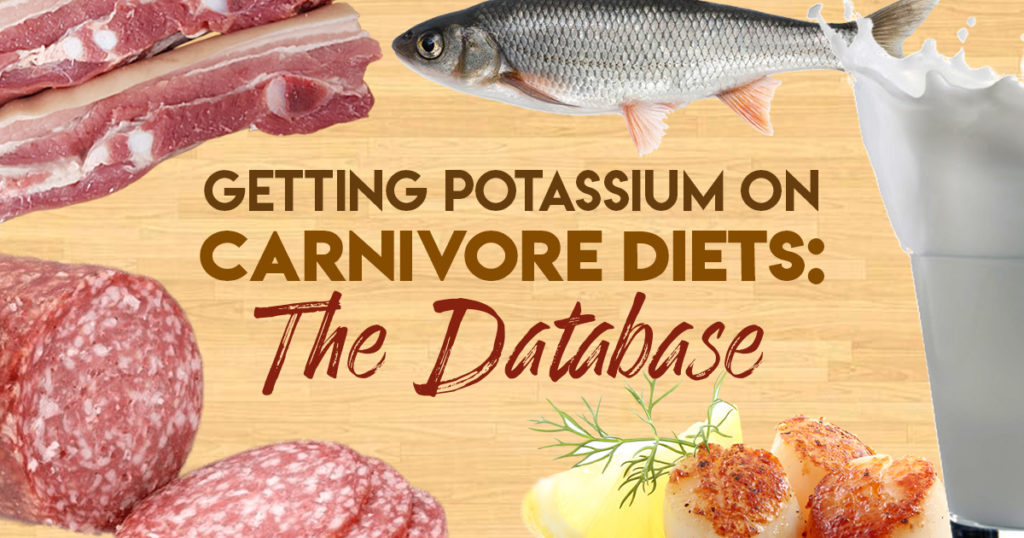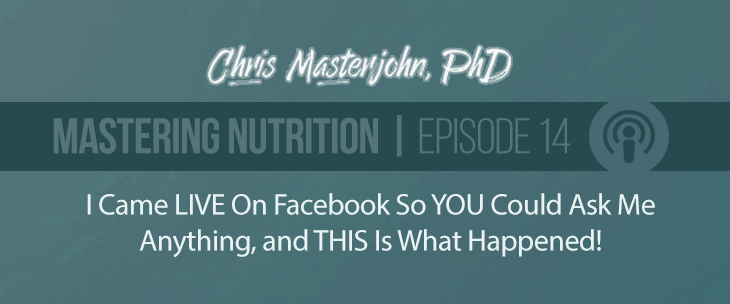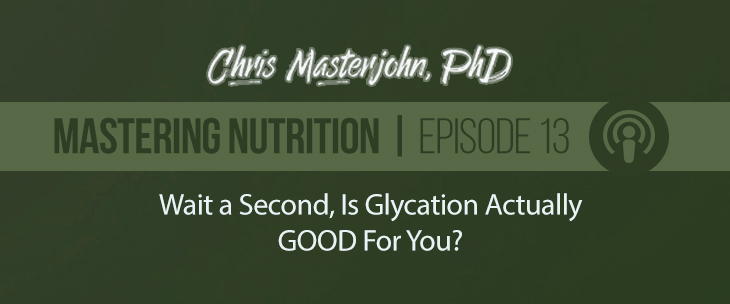
How Much Potassium Do We Need?
From 2005-2019, the official recommendations were that we should all get 4.7 grams of potassium per day. This was because studies have shown some people need this much to abolish the rise in blood pressure that otherwise occurs when they eat lots of salt.
In 2019, the official recommendations were lowered, because no one had shown that increasing potassium intake actually reduces the risk of heart disease or the likelihood of being diagnosed with “hypertension,” the technical name for high blood pressure. Now, the official recommendations are 2.6 grams per day for adult women, 3.4 grams per day for adult men, a little extra for women that are pregnant or lactating, and less for children.
Despite the change in official recommendations, it remains the same that some people need 4.7 grams per day to be able to tolerate salt without their blood pressure rising to unhealthy levels.
Further, by some estimates our hunter-gatherer ancestors consumed 11 grams per day. There are good reasons to think high intakes of potassium protect our kidneys, bones, and hearts, so it may make sense to err on the side of what our hunter-gatherer ancestors obtained.
Therefore, I recommend considering the official recommendations of 2.3 grams per day for women and 3.4 grams per day for men as a minimum target, and 4.7-11 grams per day as the optimal range.
How Much Potassium on a Carnivore Diet?
Although no studies have directly assessed how much potassium we need on a carnivore diet, there are two concerns that stand out for carnivore diets:
- Many of the potassium-rich carnivore foods are richer in calories than many potassium-rich plant foods. Therefore, it is more important to look at the potassium-to-calorie ratios of carnivore foods to make sure you can hit your potassium target without overeating.
- Lean meats are excellent sources of potassium, while most fats and oils are very low in potassium. However, one of the benefits of potassium is that it closely associates with organic acids that have an alkalinizing effect. Lean muscle meats tend to be rich in sulfur amino acids, which have an acidifying effect. Increasing the lean protein relative to fat and collagen-rich tissues will tend to increase potassium levels, but will also tend to increase acid-generating sulfur amino acids.
The database therefore allows you to sort by potassium per 100 Cal, potassium per 100 g protein, and potassium per g sulfur amino acids.
I recommend aiming for these targets, in mg potassium:
- per 100 Cal: at least 115 for women and 136 for men
- per 100 g protein: at least 750-1500
- per g sulfur amino acids at least 188-375
The first target ensures that the minimums can fit into a 2000 Cal diet for women and a 2500 Cal diet for men, and the other two targets ensure that the diet doesn't get too acid-generating.
How to Use the Database
Once you search, page numbers of search results are listed on the bottom. To go to the next page or a previous page, use the arrows on the left and right side of the screen.
You can do a blank search with the default category “all foods” and the default content “potassium (mg per 100 g food).” This will sort the foods in declining potassium content per 100 grams food. Click on “view more details” to view all the metrics for a given food, as well as sources.
You can change the content to per 100 Cal, per 100 g protein, or per g sulfur amino acids to sort them by those criteria. You can change the category to limit your search to a certain category of food. You can type in a keyword to search by that keyword, with or without limiting the category.
The keyword search is sensitive to the exact spelling. If you don't find what you're looking for, look for spelling errors, or change singular to plural or vice versa.
Fats and oils that are rendered or pure are in the “fats and oils” category. Unrendered meat fats are in their respective meat category.
Further Reading
My free Vitamins and Minerals 101 course contains three lessons totaling 42 pages on salt and potassium. You can sign up to receive the course by email or Facebook messenger here. The lessons come out once each day, and the salt and potassium lessons are lessons 25, 26, and 27.
You can get the salt and potassium lessons immediately if you sign up for Vitamins and Minerals 101 Premium. You get lifetime access for free if you pre-order the Vitamins and Minerals 101 book, which I will be finishing and releasing as soon as it is clear the COVID-19 crisis has subsided. You also get free access if you are a member of the CMJ Masterpass, a membership program aimed at helping you save money if you have significant health and wellness expenditures. Being a member also gets you 30% off pre-orders of the paperback and 50% off pre-orders of the digital versions of the book.
You may also enjoy my free 8-page Guide to Doing Carnivore Right.
Scientific References
The 2005 Dietary Reference Intakes for potassium.
The 2019 Dietary Reference Intakes for potassium.
Frassetto, et al. Estimation of Net Endogenous Noncarbonic Acid Production in Humans From Diet Potassium and Protein Contents. Am J Clin Nutr. 1998 Sep;68(3):576-83.
Sebastian, et al. Estimation of the Net Acid Load of the Diet of Ancestral Preagricultural Homo Sapiens and Their Hominid Ancestors. Am J Clin Nutr. 2002 Dec;76(6):1308-16.
Sebastian, et al. The Evolution-Informed Optimal Dietary Potassium Intake of Human Beings Greatly Exceeds Current and Recommended Intakes. Semin Nephrol. 2006 Nov;26(6):447-53.
Technical Notes
Cutoffs for optimal ratios between potassium and protein or sulfur amino acids are somewhat arbitrary given that they have not been studied in sufficient detail to show that changing diets to meet specific targets lead to important changes in health outcomes. The thresholds recommended here will keep the diet close to the cluster of diets on the lesser acid-generating side shown in Figure 2 of the Frassetto, 1998 paper. The sulfur amino acid-based target is derived from the protein-based target assuming that sulfur amino acids tend to be 4%, give or take one percentage point, of most animal proteins that would have been consumed in the diets studied in that paper.
Other Databases
If you enjoyed this database, check out my other searchable database under “tools” in the main menu.
Join the Next Live Q&A
Have a question for me? Ask it at the next Q&A! Learn more here.
Subscribe
Subscribe or upgrade your subscription here.
Masterpass members get access to premium content (preview the premium posts here), all my ebook guides for free (see the collection of ebook guides here), monthly live Q&A sessions (see when the next session is here), all my courses for free (see the collection here), and exclusive access to massive discounts (see the specific discounts available by clicking here). Upgrade your subscription to include Masterpass membership with this link.
Learn more about the Masterpass here.
Take a Look at the Store
- At no extra cost to you, please consider buying products from one of my popular affiliates using these links: Paleovalley, Magic Spoon breakfast cereal, LMNT, Seeking Health, Ancestral Supplements. Find more affiliates here.
- For $2.99, you can purchase The Vitamins and Minerals 101 Cliff Notes, a bullet point summary of all the most important things I’ve learned in over 15 years of studying nutrition science.
- For $10, you can purchase The Food and Supplement Guide for the Coronavirus, my protocol for prevention and for what to do if you get sick.
- For $15, you can pre-order a single format of my Vitamins and Minerals 101 book, my complete guide to nutrition, which I am currently working full-time on finishing.
- For $25, you can pre-order a digital bundle of my Vitamins and Minerals 101 book.
- For $29.99, you can purchase a copy of my ebook, Testing Nutritional Status: The Ultimate Cheat Sheet, my complete system for managing your nutritional status using dietary analysis, a survey of just under 200 signs and symptoms, and a comprehensive guide to proper interpretation of labwork.
- For $35, you can pre-order a complete bundle of my Vitamins and Minerals 101 book.
- For $250-$1499.99, you can work one-on-one with me.




You say 4.7 but then you provide a recommendation for men and women that is different for one and far shy of 4.7 as well. Potassium is need to maintain hydration.
I would like to see a “top 10” type list in each category